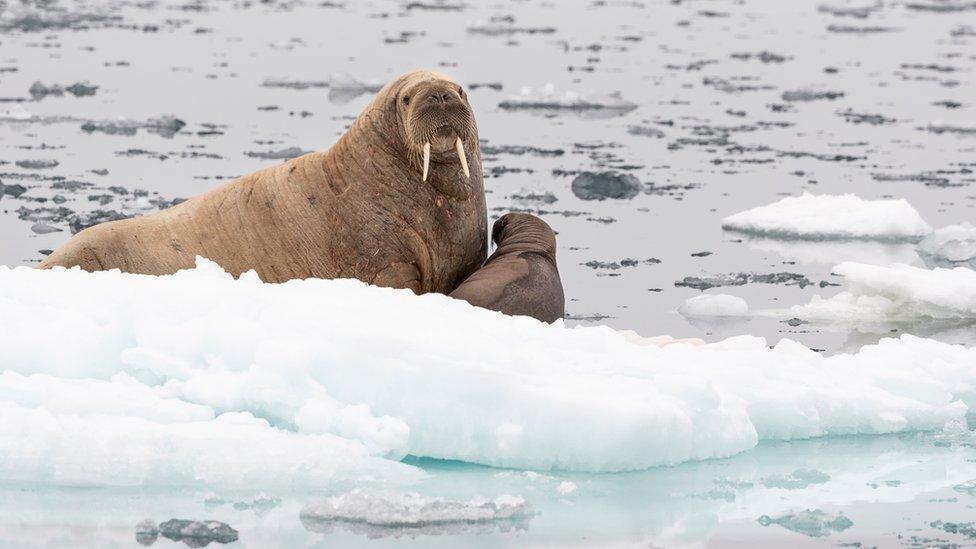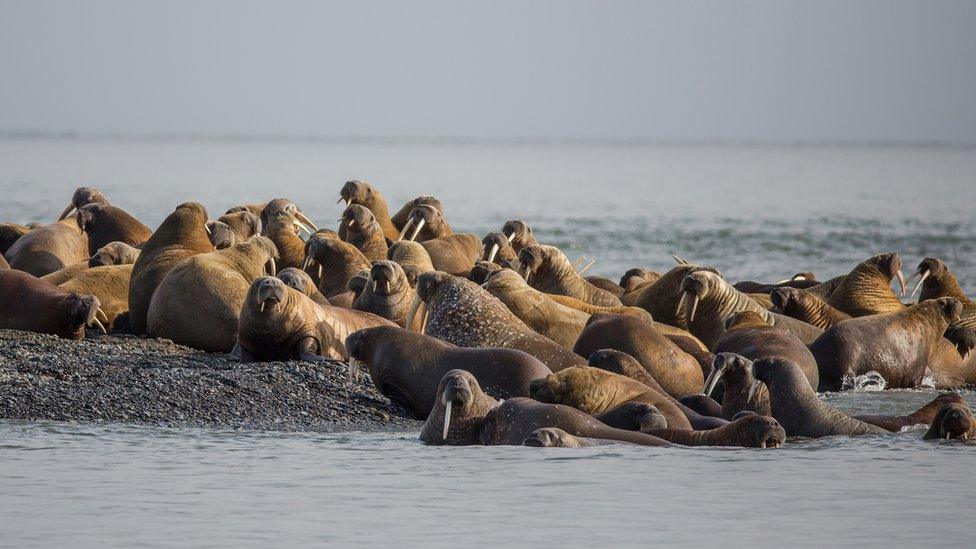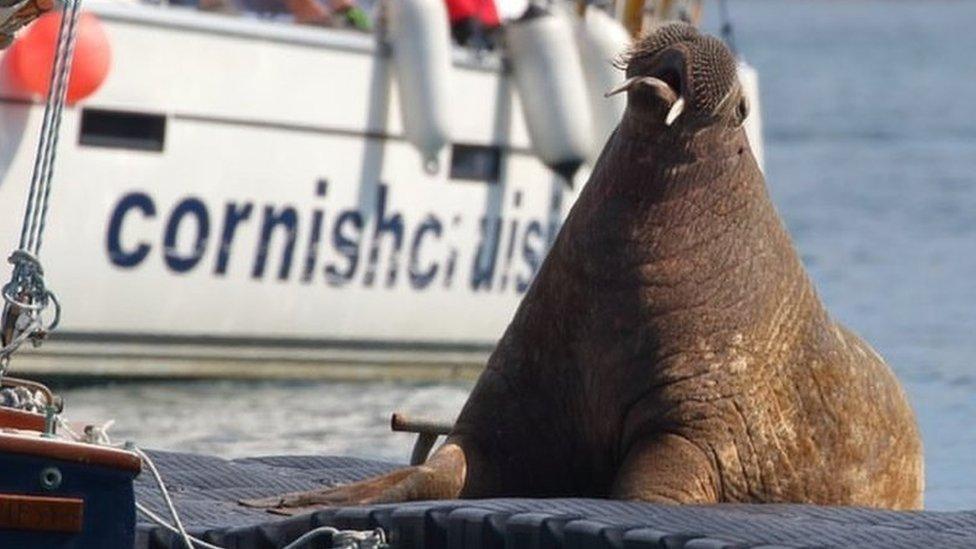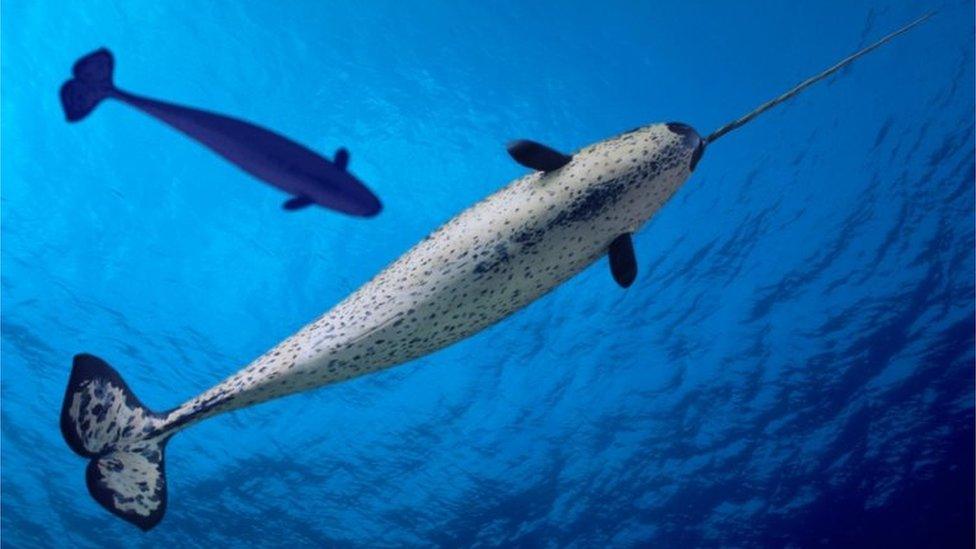WWF and BAS looking for volunteers to spot walrus from space
- Published
- comments

Conservation charity WWF and the British Antarctic Survey (BAS) have teamed up to ask for volunteers to help them spot walrus from space!
It's part of a new research project to help them to count Atlantic walrus using satellite images by space and intelligence company Maxar Technologies' DigitalGlobe.
This is because conservationists are worried about the walrus' Arctic home which is warming almost three times faster than the rest of the world
The data collected from this project will give scientists a better idea of how the walrus are doing - without disturbing them, and help conservationists to better plan on how to protect them.
Hannah Cubaynes, a space research associate at British Antarctic Survey, said: "Assessing walrus populations by traditional methods is very difficult as they live in extremely remote areas, spend much of their time on the sea ice and move around a lot, satellite images can solve this problem.
"However, doing that for all the Atlantic and Laptev walrus will take huge amounts of imagery, too much for a single scientist or small team, so we need help from thousands of citizen scientists to help us learn more about this iconic animal."
Why is the walrus at risk?

Walrus use sea ice for resting and to give birth to their young.
According to conservationists around 13 percent of summer sea ice is disappearing each decade.
As the sea ice melts, more walrus are forced to head to land to rest.
This can lead to overcrowding - when too many walrus gather in one place, and there is not enough room for them all - on beaches, and can cause walrus to become injured, or even die if they get trampled on by other walrus.
They weigh a tonne... literally - Male Pacific walruses can reach 3.6 m long and weigh over 1,500kg (that's 1.5 tonnes).
Both male and female walrus have tusks - They use their tusks to help them to get onto slippery sea ice, as well as for fighting off other walruses, and predators.
They're actually pretty fast. Despite their large size, walruses can move surprisingly fast on land. Running on all fours like a dog, they can run about the same speed as a human being.
Resting on land instead of sea ice also means that walrus will have to swim further and use more energy to reach their food.
Less sea ice might also encourage more enormous ships to travel through the arctic disturbing the creatures.

Earlier this year Cub Scouts from across the UK helped researchers test the project's technology by helping to count the walrus.
Cub Scout Imogen, said: "We are helping the planet by doing the walrus count with space satellites, which is really cool. It was a hard thing to do but we stuck at it"
Chief polar adviser at WWF, Rod Downie, said: "Walrus are an iconic species of great cultural significance to the people of the Arctic, but climate change is melting their icy home.
"It's easy to feel powerless in the face of the climate and nature emergency, but this project enables individuals to take action to understand a species threatened by the climate crisis, and to help to safeguard their future.
- Published4 July 2021

- Published13 March 2021

- Published26 July 2012

